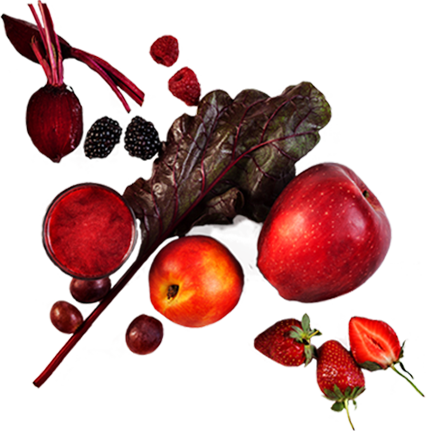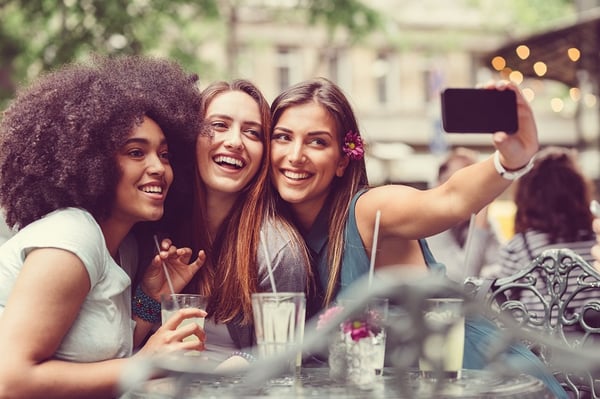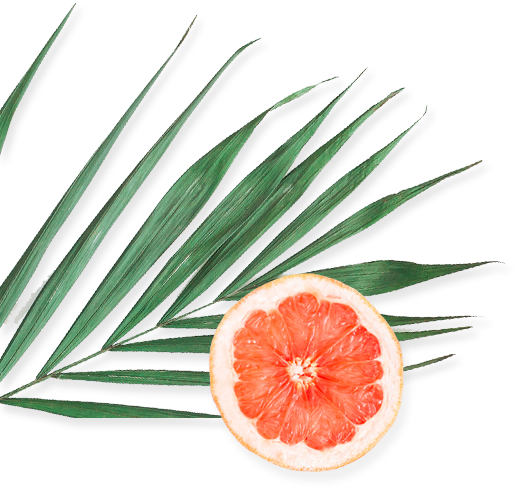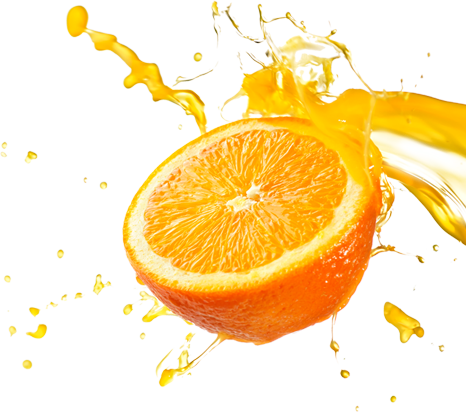
Which role does social media play on the food & beverage sector?

Featured Posts
Categories
Interested in more? Subscribe to our blog.
Social media have long since become an everyday communication tool. For the food and beverage industry in particular, new doors are opening with Instagram, TikTok, Facebook, LinkedIn, Youtube and more. The reason for this and with which trends you can now get started on social media in the food & beverage sector are stated here.

The social media universe grows and grows - every year Facebook, Instagram or Youtube record another plus in their user statistics. In January 2020, the number of monthly active users of social networks worldwide was around 3.8 billion, which means that the number has increased by around 9.5 percent compared to the previous year. In 2015 it was around 2.08 billion. In view of these facts, it hardly needs to be mentioned that social media has become an integral part of a professional marketing mix, but let's take a closer look on the figures: They provide information about the role social media actually plays in the food & beverage sector!
Facebook is still the largest network
In the ranking of the largest social networks worldwide, Facebook was on first place in January 2020 with around 2.45 billion monthly active users, followed by Youtube with a total of two billion users across the globe and the messenger service WhatsApp with 1.6 billion users. Mark Zuckerberg is in clear leadership: With Facebook Messenger and Instagram, a total of four Facebook services can now be found among the six largest social networks and messenger services.
Measured by the page views, Facebook was also the market leader among social media platforms in September 2020 with a market share of 74.59 percent. Pinterest followed a long way behind with around 11.58 percent of page impressions, and Twitter and YouTube with market shares of 6.88 and 3.99 percent respectively.
Longest usage time in the Philippines
The ranking of the countries with the highest average usage time led the Philippines in 2019 with 233 minutes per day. This was followed by Colombia on the second place with an average of 225 minutes a day, Germany in 42nd place with 79 minutes per day and Japan on the last place with an average social media usage time of "only" 45 minutes a day.
Sources:
https://de.statista.com/statistik/daten/studie/739881/umfrage/monatlich-aktiv-social-media-nutzer-weltweit/#:~:text=Anzahl%20der%20aktiv%20Social%2DMedia%2DNutzer% 20worldwide% 20to% 202020 & text = In% 20January% 202020% 20lag% 20die, at% 20round% 202% 2C08% 20billion.
https://blog.hootsuite.com/de/social-media-trends/
Social media in the food & beverage industry: reaching the target group precisely
What are marketers currently doing with social media? According to a survey by the social media tool Hootsuite, 64 percent want to increase their brand awareness through their presence on social media, 45 percent want to drive their conversions and 42 percent want to win new customers. Social media in the food & beverage sector has particular potential.
One of the main reasons is that the large platforms are now achieving enormous global reach and, depending on the strategy, the right target group can be addressed - directly in two-way communication. After all, in addition to word of mouth marketing in the broader sense through likes and shares, interaction is another great asset of social media. In photo communities such as Instagram and Facebook, brands can increase the popularity of their products fairly quickly with lovely, authentic to glamorous imagery. It is not surprising that foodies in particular can be found on these portals: after all, besides fashion, living and travel, there is hardly any other industry than food that leaves so much visual design options, for example in the form of stimulating photos, which are listed rightly under hashtags such as #foodporn!
Twitter and LinkedIn are suitable for news and business-oriented communication and YouTube is perfect for any number of e.g. share long background information or DIY instructions in moving image format. For marketing in the area of social media in the food & beverage industry, for example, opens up the possibility of posting videos with recipes or DIY cooking instructions.
Video and GIFs are becoming increasingly important on the Internet: One of the latest social media is the TikTok platform, which is into the first place of the most installed apps in the first quarter of 2019 with over 800 million active users per month. Just like Snapchat, TikTok primarily appeals to the younger generation with short video clips: 69 percent of TikTok users are 16 to 24 years old. In addition, 60 percent of young video clip junkies are at home in China. Not to be neglected is the fact that brands stay optimally connected to their customers and prospects via social media and can keep them up to date and inspire them with interesting and entertaining content. The motto: the better the content, the more popular the brand!
Source: https://blog.hootsuite.com/de/social-media-trends/

Thanks to social media: Eating with eyes is becoming more meaningful
The visual media age has finally achieved its breakthrough by social media. And that is not without effect: In particular, lifestyle brands from fashion to wellness to food addresses many senses and are in good hands on social platforms. This now also means that companies in the food and beverage industry are allowed to rethink, and that begins with product development. Mintel points out that cooking at home has grown in popularity again since the Covid 19 crisis: In July of this year, 79 percent of consumers in China stated that they currently cook at home on a regular basis. In the Netherlands and Chile it is 69 percent, in Australia 64 percent, in the UK 62 percent and in the USA 60 percent. Before the Corona crisis, these values were significantly lower in all countries.
According to Mintel, three things are now promising when it comes to a clear product and marketing strategy in connection with social media, and so the experts recommend the following steps:
1. Think carefully about the shape, texture and presentation of your product, taking into account your social media presence
2. Inspire creative home cooks with your product
3. Focus on "healthy" colours and textures: These are currently particularly popular!
Source: "'Eat With Your Eyes' progresses beyond novelty color - The visual appeal of food and drink with interesting colors, shapes and textures is moving from out-of-home indulgence to home-cooked and healthy food and drink", Jenny Zegler , Mintel, August 2020
Social media in the food & beverage sector: score trendsetters!
Anyone who manages to get the attention of influencers and/or private users with an innovative product can quickly become a trendsetter and go viral via social media. Every year is shaped by certain food trends as well as recipes and creations that are hyped by bloggers and influencers on the internet: This year it was Dalgona Coffee! In previous years, there was no avoiding about golden milk, avocado toast, baked cauliflower, porridge in all variations, beetroot lattes, switchel, infused water, celery juice, smoothies in all colours and flavours, and mocktails.
CONCLUSION:
The number of social media users is growing steadily worldwide. It is currently around 3.8 billion per month. The fact that social media marketing has become indispensable in the food & beverage industry even has an impact on product development. Today it is particularly important that a drink not only tastes good, but is also instagrammable! Colours, shapes and textures must therefore visually create a perfect show and attract as much attention as possible through originality. Anyone who gets a hit goes viral!





